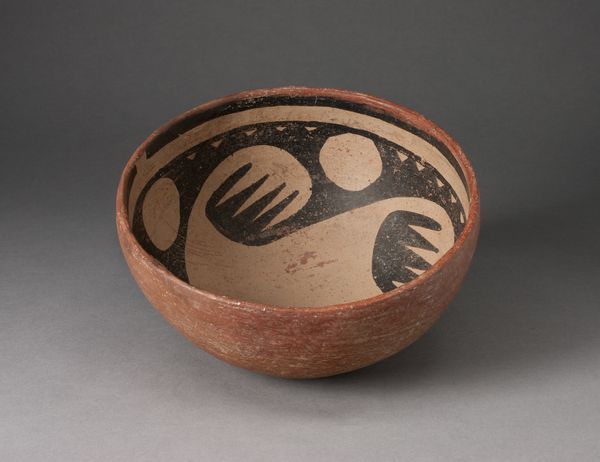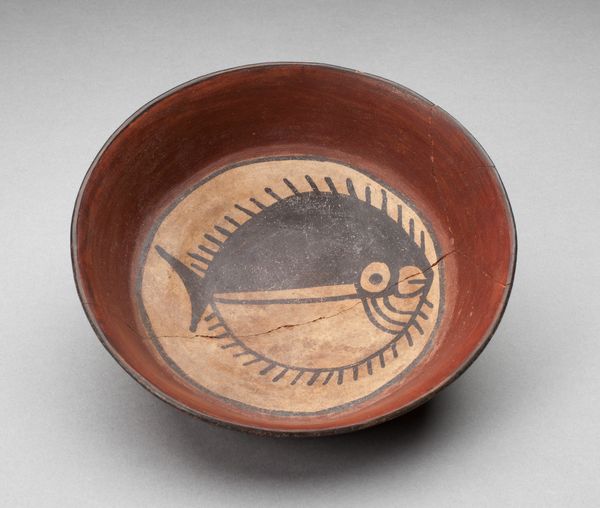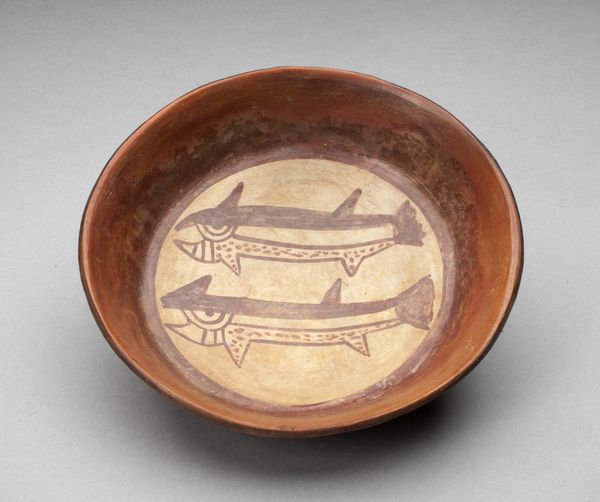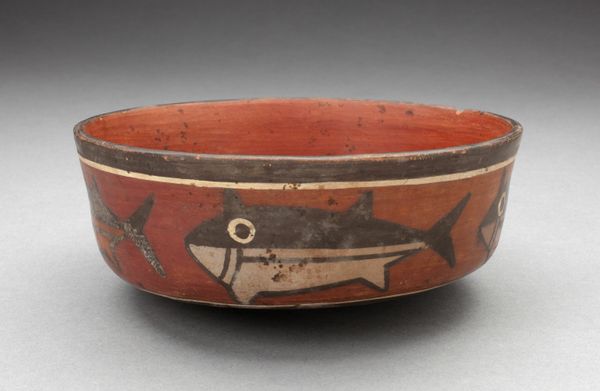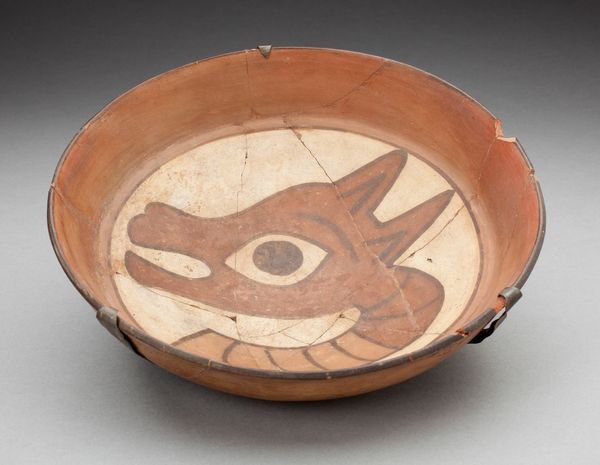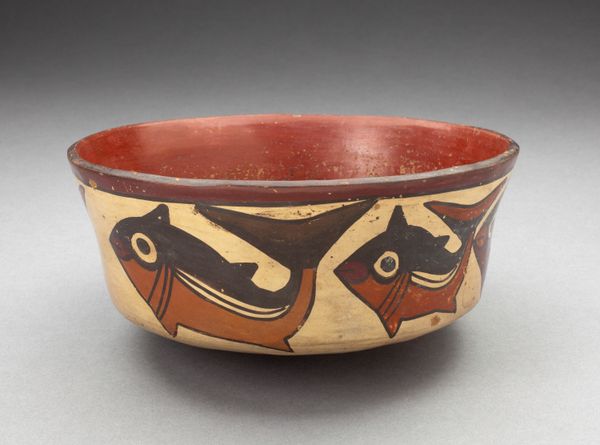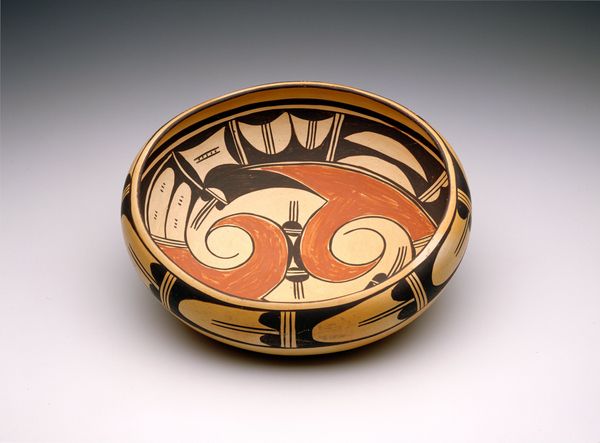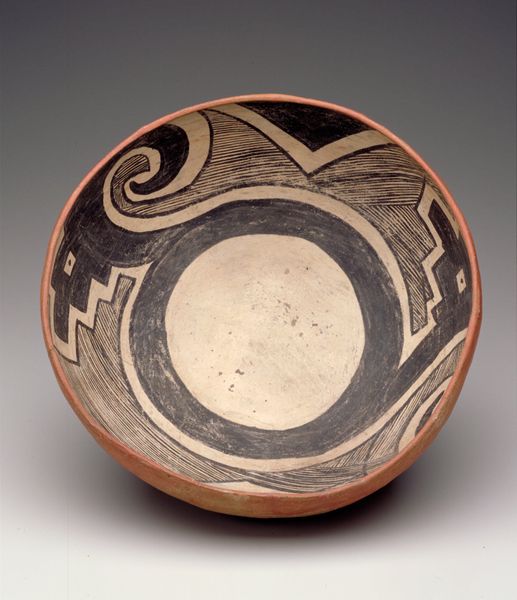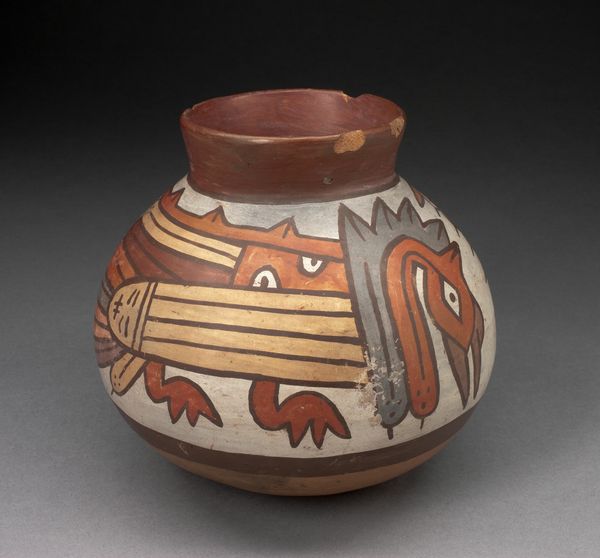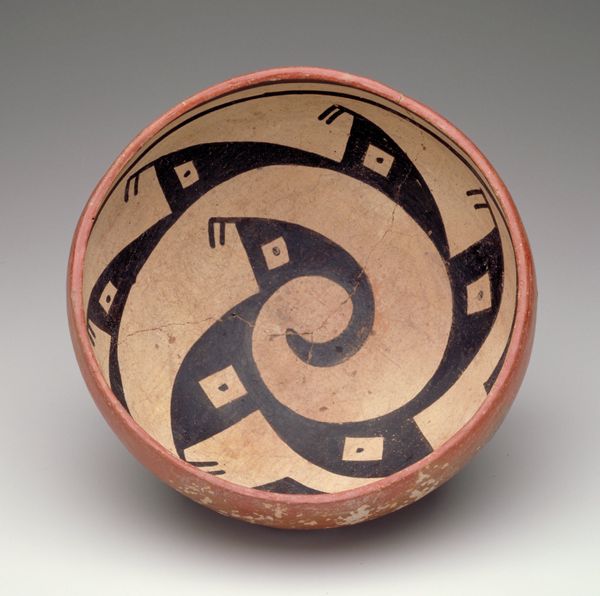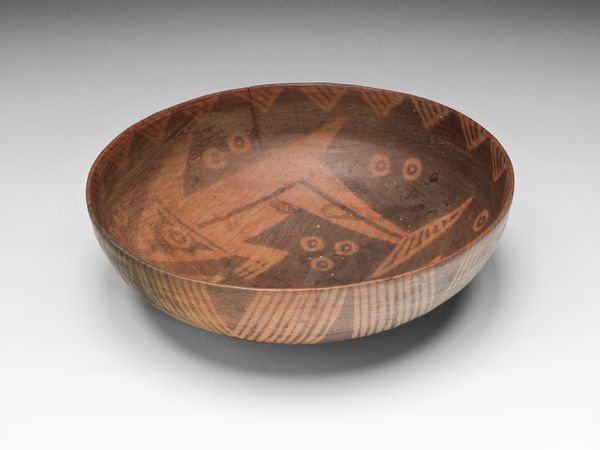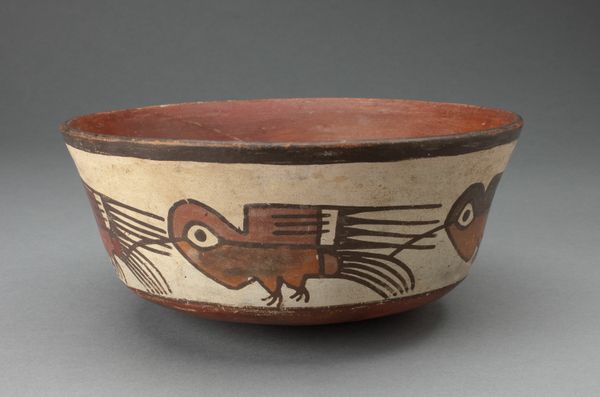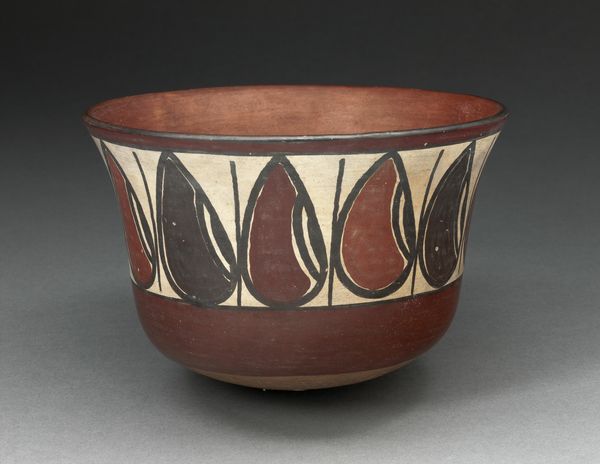
ceramic
#
ceramic
#
figuration
#
ceramic
#
indigenous-americas
Dimensions: 5.1 × 15.9 cm (2 × 6 1/4 in.)
Copyright: Public Domain
Editor: Here we have a ceramic plate made by the Nazca people sometime between 180 and 500 AD. The painted decoration shows what looks like a stylized fish, maybe a shark or whale. It’s quite charmingly simple. What's your take on this, looking at it? Curator: For me, this plate speaks volumes about material culture. Ceramic production itself, from the sourcing of clay to the firing process, represented a significant investment of labor and resources. It wasn’t just about making a pretty thing. The pigments used – ochre and black appear dominant – would have come from specific locations, each carrying its own geographic and perhaps symbolic weight. Editor: So, the materials tell a story beyond just the image on the plate? Curator: Absolutely. Consider the function. This wasn’t necessarily "high art." It was utilitarian. Who used it? How? Was it for everyday use, or reserved for ritual feasts? The image itself also probably served a ritual purpose related to successful harvests or bountiful fishing. How were the fish caught, who were the fisherman? Those issues affected social structures. It isn't abstract aesthetics we should look to, but the socio-economic system in place. Editor: That's fascinating, thinking about it as part of a whole production and consumption cycle rather than just a standalone object. Curator: Precisely! By examining the materials, production techniques, and potential use of this seemingly simple plate, we gain insight into the social, economic, and ecological realities of the Nazca people. This approach connects us to the lives of the individuals who made and used this object. We learned about history from it, beyond the painting on its surface.
Comments
No comments
Be the first to comment and join the conversation on the ultimate creative platform.
